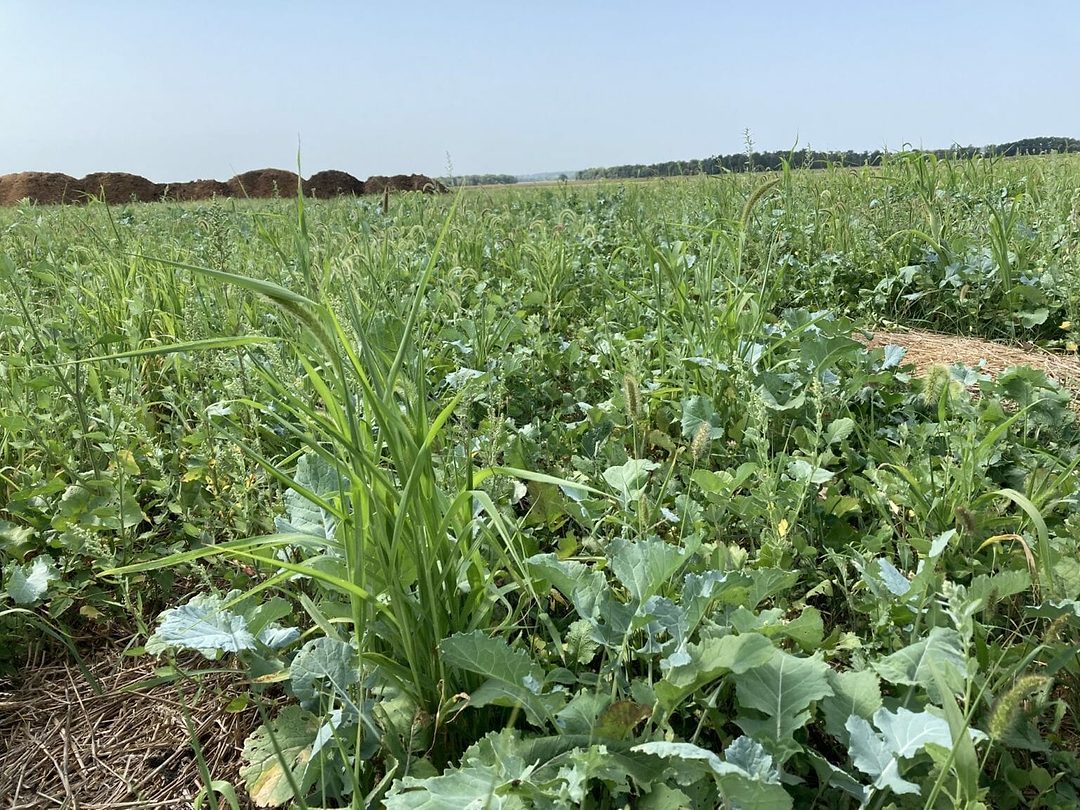By: Taylor Hintch
Transitioning to organic, Noah Wendt and Caleb Akin are closely planning for success in three areas: nutrients for the following crop, weed control and grazing opportunities. During the July Shared Learning Call, we talked specifically about summer cover crops, and a few new practices they’re testing on their farm.
Grazing Mix for Summer Covers
Weather permitting, summer cover crops are seeded within a week of summer small grains harvest. As Noah and Caleb transition to organic, the value summer cover crops bring to their system is becoming more apparent. They observe that cover crops play a role in weed suppression, building nutrients, improving soil health, and provide additional pasture. Certain covers, like clover, lend themselves as companion crops to their small grains from spring through summer.
To make the most of their cover crops, Noah and Caleb graze cattle on a diverse cover crop mix, providing financial and soil health and nutrient benefits. Noah and Caleb continually experiment with diverse grazing mixes in combination with alfalfa and clover. They establish their grazing mix in two stages: first, they interseed alfalfa and clover with a small grain in the spring. The additional species –up to 10 more species –are drilled 1-2 days after small grain harvest. Waiting to seed the mix until after harvest results in much better germination compared to interseeding.
Their mixes contain up to 10 species; the added diversity delivers desired nutrients to the cattle. This year’s laundry list of species includes: vetch, purple-top turnips, kale, Ethiopian cabbage, sorghum-sudan grass, millet, sunn hemp, cowpeas, faba beans and lentils. To increase the cattle’s sugar intake as they summer-finish from August through October, they try to graze on pearl millet and sorghum-sudan grass.
This is their first year seeding cover crops with their own no-till drill which allows them to have more control over timing. “If the drill is at our disposal and ready to go, we feel our seeding will be more timely and more successful,” says Noah. This year they will drill in the grazing mix get better seed to soil contact in hopes of achieving a better stand, so long as they get some rain following small grains harvest.
Testing Clover Species
In years prior to having their own drill, Noah and Caleb had success broadcast-seeding alfalfa, clover and a grazing mix followed with a culti-packer. This year they are trying a different mix, interseeded soon after they drilled oats: alfalfa and four clovers – berseem, balansa, yellow and red clover. This experiment tests clover varieties to discover if there is an optimal clover variety to crimp in their organic system.
Relay-Cropping Soybeans into Rye
This year Noah and Caleb are also experimenting with relay cropping soybeans into rye. “We are seeding rye in the fall and we built a planter to seed soybeans into the rye in skinny strips-right at pollination,” says Caleb. They will harvest the rye, then use the strip planter again to plant cover crops in between the beans rows. By getting the cover crop in early, they’ll improve overwintering success and build N in the soil before the next crop.





Post a comment
Report Abusive Comment